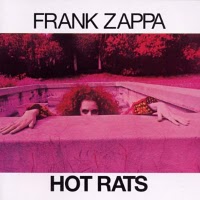 If there’s one thing I’m a sucker for, it’s psychedelic wah-wah guitar; Eddie Hazel’s Game, Dame & Guitar Thangs, Randy California’s Kapt. Kopter, John McLaughlin’s Devotion. And Frank Zappa’s second solo effort, 1969’s Hot Rats, proudly belongs among this stellar mind-blowing company. Somewhat of a break from the high-concept Mothers Of Invention, it’s divided between long guitar jams, most notably “Willie The Pimp,” which re-introduced Captain Beefheart to the world in all his eccentric splendor, and fusionoid instrumentals featuring multi-reedist Ian Underwood in multiple overdubs. Interestingly, Underwood’s flat intonation here takes intriguing lyrical compositions such as “Little Umbellas” and “It Must be A Camel” out of jazz wannabe Weather Report territory into a more formal “classical” direction, always the underlying goal with Zappa anyway. But, in the end, Rats is a showcase for Frank to wail and he ain’t fooling around! –Singersaints
If there’s one thing I’m a sucker for, it’s psychedelic wah-wah guitar; Eddie Hazel’s Game, Dame & Guitar Thangs, Randy California’s Kapt. Kopter, John McLaughlin’s Devotion. And Frank Zappa’s second solo effort, 1969’s Hot Rats, proudly belongs among this stellar mind-blowing company. Somewhat of a break from the high-concept Mothers Of Invention, it’s divided between long guitar jams, most notably “Willie The Pimp,” which re-introduced Captain Beefheart to the world in all his eccentric splendor, and fusionoid instrumentals featuring multi-reedist Ian Underwood in multiple overdubs. Interestingly, Underwood’s flat intonation here takes intriguing lyrical compositions such as “Little Umbellas” and “It Must be A Camel” out of jazz wannabe Weather Report territory into a more formal “classical” direction, always the underlying goal with Zappa anyway. But, in the end, Rats is a showcase for Frank to wail and he ain’t fooling around! –Singersaints
Jive Time Turntable
Symphonie Fantastique
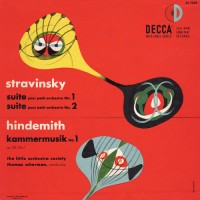
Growing up with rock music it’s fascinating for us to imagine what Debussy and Stravinsky might have sounded like to similar ears a century ago. The cover art in Symphonie Fantastique offers a glimpse of how modern these sounds were before bop and rock by how they were interpreted graphically on early LP covers. Visit the gallery›
Felt “The Strange Idols Pattern and Other Short Stories” (1984)
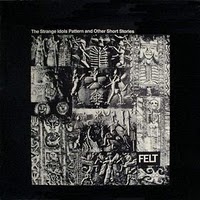 “The Strange Idols Pattern…” is the masterpiece of early indiepop, although is often less considered than Felt’s fifth album, the organ driven “Forever Breathes The Lonely Word”. Here Maurice Deebank provides the best guitar playing I’ve ever heard, a constant whirl of sweet jangly picking (on a 12 string guitar I think) and sometimes classical/Spanish melodies; Lawrence encapsulates such imaginative and brilliant solo playing in wonderful three-chord songs, sung with a monotonous and subtle tone that never sounds cheesy or pathetic like Morrissey’s howling. I understand that such vocals can be considered boring, but I think they’re the best accompaniment for the stream of background notes that – at least for me – has to be on the frontline, while the vocals are secondary. Absolutely great album, my favourite song here is “Crystal Ball”, with the best guitar work ever made by Deebank, and a constant sense of tragedy that remains subtle and never explodes, not even in the final short solo. –Gneo
“The Strange Idols Pattern…” is the masterpiece of early indiepop, although is often less considered than Felt’s fifth album, the organ driven “Forever Breathes The Lonely Word”. Here Maurice Deebank provides the best guitar playing I’ve ever heard, a constant whirl of sweet jangly picking (on a 12 string guitar I think) and sometimes classical/Spanish melodies; Lawrence encapsulates such imaginative and brilliant solo playing in wonderful three-chord songs, sung with a monotonous and subtle tone that never sounds cheesy or pathetic like Morrissey’s howling. I understand that such vocals can be considered boring, but I think they’re the best accompaniment for the stream of background notes that – at least for me – has to be on the frontline, while the vocals are secondary. Absolutely great album, my favourite song here is “Crystal Ball”, with the best guitar work ever made by Deebank, and a constant sense of tragedy that remains subtle and never explodes, not even in the final short solo. –Gneo
Camel “The Snow Goose” (1975)
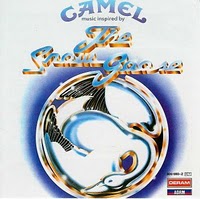 The Snow Goose is an essential experience, evocative and emotional, ambitious in it’s concept and execution, but accessible as well. The band manage to sustain an entirely instrumental album by filling it with brief, memorable pieces, carried by their always measured performances. While most of the album is devoted to the familiar Camel sound, they are joined in places by a small woodwinds group, expanding the scope of the music. Although you’ll want to leave the needle in place once you drop it, a few especially awesome moments are worth mentioning in particular, such as the multi-dimensional “Rhayader Goes To Town”, “The Snow Goose” which features some tender, spine-tingling guitar phrases, the duo of “Preparation”, with it’s foreboding sequencer pattern, and it’s haunting, slow-boiling partner in “Dunkirk”. But this is a complete, constantly unfolding album that should be heard with the lights down low, brew of choice in hand, the world of The Goose swooping into your listening room and filling the next 40 minutes with it’s sublime sounds. –Ben
The Snow Goose is an essential experience, evocative and emotional, ambitious in it’s concept and execution, but accessible as well. The band manage to sustain an entirely instrumental album by filling it with brief, memorable pieces, carried by their always measured performances. While most of the album is devoted to the familiar Camel sound, they are joined in places by a small woodwinds group, expanding the scope of the music. Although you’ll want to leave the needle in place once you drop it, a few especially awesome moments are worth mentioning in particular, such as the multi-dimensional “Rhayader Goes To Town”, “The Snow Goose” which features some tender, spine-tingling guitar phrases, the duo of “Preparation”, with it’s foreboding sequencer pattern, and it’s haunting, slow-boiling partner in “Dunkirk”. But this is a complete, constantly unfolding album that should be heard with the lights down low, brew of choice in hand, the world of The Goose swooping into your listening room and filling the next 40 minutes with it’s sublime sounds. –Ben
Leonard Cohen “Songs of Love and Hate” (1971)
 Never the most chipper of performers, Cohen seems to have stopped taking his happy pills here, but the album is all the better for it as far as I’m concerned. Songs about religion? Check. Anguish? Check. Love? Check. No sex though..must be his impotent period. But anyway, it’s just fabulous from start to finish, and contains some of his best lyrics, especially “Avalanche”, “Famous Blue Raincoat”, and “Diamonds In The Mine”. The latter track finds him nearly losing it like some angry lounge singer, his background vocalists barely keeping him in check. There was never any doubt Leonard Cohen was a poet, but both his written word and music shine perfectly in unison here. Speaking of poetry, if you’re a woman in college right now and some smooth character is shooting you provocative looks from the poetry section in the library, run like hell. I know he’s probably holding a copy of Cohen’s “Beautiful Losers” and has a wine collection, but he’s not worth it. Trust me. –Neal
Never the most chipper of performers, Cohen seems to have stopped taking his happy pills here, but the album is all the better for it as far as I’m concerned. Songs about religion? Check. Anguish? Check. Love? Check. No sex though..must be his impotent period. But anyway, it’s just fabulous from start to finish, and contains some of his best lyrics, especially “Avalanche”, “Famous Blue Raincoat”, and “Diamonds In The Mine”. The latter track finds him nearly losing it like some angry lounge singer, his background vocalists barely keeping him in check. There was never any doubt Leonard Cohen was a poet, but both his written word and music shine perfectly in unison here. Speaking of poetry, if you’re a woman in college right now and some smooth character is shooting you provocative looks from the poetry section in the library, run like hell. I know he’s probably holding a copy of Cohen’s “Beautiful Losers” and has a wine collection, but he’s not worth it. Trust me. –Neal
Chuck Jackson “Goin’ Back to Chuck Jackson” (1969)
 Chuck Jackson must have been a really weird fit for Motown. Kind of like the Yankees acquiring Michael Schumacher; top brand aquires top talent, despite the obvious apples/oranges implications. His tenure at Wand was mainly filled with well-done Iceman ballad stylings with the odd Northern track (“Chains of Love”) thrown in for giggles. But just like the Iceman himself making a pair of brilliant albums in Philly, this album works extremely well. I would have to imagine that Chuck did something wrong in his interview with Berry Gordy. Maybe he didn’t seem too thrilled at the prospect of putting two white teenagers kissing on a beach on the album cover. Maybe he went on and on about how much he liked the new Isley Brothers single on T-Neck and how they’re doing so well now. In any event, Berry did not stack this album with songwriting talent. Two Smokey songs, one H-D-H, one Ashford/Simpson, one Stevie Wonder, and then some other guys. No producer’s credit either. Needless to say this does not sound like a 1969 Motown album.
Chuck Jackson must have been a really weird fit for Motown. Kind of like the Yankees acquiring Michael Schumacher; top brand aquires top talent, despite the obvious apples/oranges implications. His tenure at Wand was mainly filled with well-done Iceman ballad stylings with the odd Northern track (“Chains of Love”) thrown in for giggles. But just like the Iceman himself making a pair of brilliant albums in Philly, this album works extremely well. I would have to imagine that Chuck did something wrong in his interview with Berry Gordy. Maybe he didn’t seem too thrilled at the prospect of putting two white teenagers kissing on a beach on the album cover. Maybe he went on and on about how much he liked the new Isley Brothers single on T-Neck and how they’re doing so well now. In any event, Berry did not stack this album with songwriting talent. Two Smokey songs, one H-D-H, one Ashford/Simpson, one Stevie Wonder, and then some other guys. No producer’s credit either. Needless to say this does not sound like a 1969 Motown album.
The album starts off well enough with a Bert Berns song but then sidesteps into a big heaping pile of Jimmy Webb. There are a lot of Jimmy Webb fans out there; I am unequivocally not one of them. I like bits of the first Fifth Dimension album. Other than that, I think his songs are firmly in the schmaltzy pathos category and one of the worst things to happen to soul music (other than Bobby Womack) was the endless assembly line of “Witchita Lineman” covers. (Oh, you’re a lineman for the county? Shut up already and fix the power lines then.) Things pick up with a solid version of “Cry Like a Baby”. Side 2 is the real stormer, however. An interesting cover of Tyrone Davis’ “Can I Change My Mind” is great, even if the trademark jangly guitar is slightly buried. “I’d Still Love You” follows and, whoa, fuzz guitar! Ominous spoken intro leads into the best production on the album. Again, I would love to know who produced this cut, as it’s definitely not Norman Whitfield territory but it’s close. “The Day My World Stood Still” is a wonderful little sleeper that opens up into a dramatically darker bridge featuring swirling strings and woodblocks with an ersatz flamenco feel and a Chuck Jackson vocal that is certainly up for the challenge. It’s the kind of staggeringly effective minor key bridge that was more common to UK psych (just replace the ersatz flamenco with ersatz Middle Eastern). A baffling little excursion that I can’t get enough of.
Motown may not have given a lot of effort and attention to Chuck Jackson, but you should. Plus he looks pretty suave in that turtleneck. He certainly looks better than I do in them. –Mike
Dr. Buzzard’s Original Savannah Band “Dr. Buzzard’s Original Savannah Band” (1976)
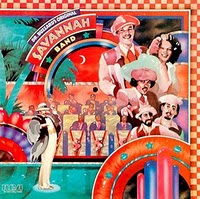 This self-titled debut (!!!) album is one of my all-time favorite records. I’ve played it thousands of times and know it by heart. Too jazzy for Disco fans, too “trivial” for Jazz fans, too remote from “roots” for the Soul/Funk division, this album was and is a dream-come-true for all those who don’t wear blinkers when it comes to music. All seven songs are jewels, and together, they’re a string of pearls. No matter from which angle – the compositions, the arrangements, the singing, the performance – always five stars. I can’t think of or play this album without fits of rapture. –Yofriend
This self-titled debut (!!!) album is one of my all-time favorite records. I’ve played it thousands of times and know it by heart. Too jazzy for Disco fans, too “trivial” for Jazz fans, too remote from “roots” for the Soul/Funk division, this album was and is a dream-come-true for all those who don’t wear blinkers when it comes to music. All seven songs are jewels, and together, they’re a string of pearls. No matter from which angle – the compositions, the arrangements, the singing, the performance – always five stars. I can’t think of or play this album without fits of rapture. –Yofriend
Bob Dylan “Blood On The Tracks” (1975)
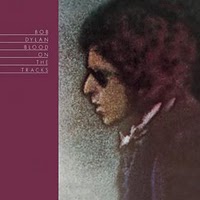 Quite simply, Blood On The Tracks is my favourite Dylan album. In one of those too few illuminating moments, I knew the first time I heard it that this was something special and through the years it has sustained me through some really bad times: divorce, depression and my Dad’s death. When written, Dylan himself was experiencing the traumas of a marriage break-up and all the muddled feelings that engenders are in evidence – sadness, bitterness, anger, relief and regret. But, even with this background, Blood On The Tracks is not a depressing album. “You’re Gonna Make Me Lonesome When You Go”, “If You See Her, Say Hello”, “You’re A Big Girl Now” and “Tangled Up In Blue” expose a man unsure of his feelings but striving to make a good fist of it. I could, and still can, identify with that. Even though his turbulent emotions must have been a dominating factor, Dylan also managed to pen a couple of wonderful morality tales: “Simple Twist Of Fate” and “Shelter From The Storm”, and a brilliantly inventive novella: “Lily, Rosemary And The Jack Of Hearts.” Blood On The Tracks will remain an album I will return to again and again. –Ian
Quite simply, Blood On The Tracks is my favourite Dylan album. In one of those too few illuminating moments, I knew the first time I heard it that this was something special and through the years it has sustained me through some really bad times: divorce, depression and my Dad’s death. When written, Dylan himself was experiencing the traumas of a marriage break-up and all the muddled feelings that engenders are in evidence – sadness, bitterness, anger, relief and regret. But, even with this background, Blood On The Tracks is not a depressing album. “You’re Gonna Make Me Lonesome When You Go”, “If You See Her, Say Hello”, “You’re A Big Girl Now” and “Tangled Up In Blue” expose a man unsure of his feelings but striving to make a good fist of it. I could, and still can, identify with that. Even though his turbulent emotions must have been a dominating factor, Dylan also managed to pen a couple of wonderful morality tales: “Simple Twist Of Fate” and “Shelter From The Storm”, and a brilliantly inventive novella: “Lily, Rosemary And The Jack Of Hearts.” Blood On The Tracks will remain an album I will return to again and again. –Ian
Black Sabbath “Never Say Die!” (1978)
 This was a pleasant surprise because I’d heard so many bad things about this album both from critics and the band themselves. Stories of being too drugged up to continue in the studio don’t seem to gel with the final product, which sounds crisp and well mixed to me, the spectacular drumming up front and Ozzy’s vocals not sounding in the least druggy. I guess there’s a lot to be said about post production. But the songs to me sound better and more musically adventurous than those on Sabotage or even the Dio era albums that followed. Particular highlights are the psychy, wah wah feel of Junior’s Eyes and Iommi’s riffage on Shock Wave. All in all, I really don’t think it was a bad album for Ozzy to bow out on. –Neal
This was a pleasant surprise because I’d heard so many bad things about this album both from critics and the band themselves. Stories of being too drugged up to continue in the studio don’t seem to gel with the final product, which sounds crisp and well mixed to me, the spectacular drumming up front and Ozzy’s vocals not sounding in the least druggy. I guess there’s a lot to be said about post production. But the songs to me sound better and more musically adventurous than those on Sabotage or even the Dio era albums that followed. Particular highlights are the psychy, wah wah feel of Junior’s Eyes and Iommi’s riffage on Shock Wave. All in all, I really don’t think it was a bad album for Ozzy to bow out on. –Neal
The Incredible String Band “The 5000 Spirits or the Layers of the Onion” (1967)
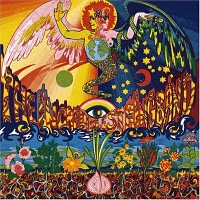 Yes, I think this is even better than The Hangman’s Beautiful Daughter. The difference is while that record gets its strength from its total weirdness — it meanders in the best sense — this one has actual songs: great, great songs that will move you, make you laugh and make you think. “First Girl I Loved” alone is enough to get you seeking out this record, but add to that the prescient sarcasm of “Back In The 1960s” (which foresees the death of the hippie ideal before it had even begun), the Wind In The Willows on acid of “Little Cloud” and “The Hedgehog Song” (The Archbishop of Canterbury’s fave ISB number!) and the simply beautiful “Painting Box”. Plus I love the way Williamson sings. For those of you who wonder what “The Fool On The Hill” would have been liked if Lennon had written it. –Brad
Yes, I think this is even better than The Hangman’s Beautiful Daughter. The difference is while that record gets its strength from its total weirdness — it meanders in the best sense — this one has actual songs: great, great songs that will move you, make you laugh and make you think. “First Girl I Loved” alone is enough to get you seeking out this record, but add to that the prescient sarcasm of “Back In The 1960s” (which foresees the death of the hippie ideal before it had even begun), the Wind In The Willows on acid of “Little Cloud” and “The Hedgehog Song” (The Archbishop of Canterbury’s fave ISB number!) and the simply beautiful “Painting Box”. Plus I love the way Williamson sings. For those of you who wonder what “The Fool On The Hill” would have been liked if Lennon had written it. –Brad
Terje Rypdal “Odyssey” (1975)
 Producer Manfred Eicher’s ECM label has been a mixed bag over the years. Much of the output has been criticized for being homogenized, self-indulgent & dull as well as being praised for genius production, adventurous artists making groundbreaking recordings, with an inner fire underneath the slick recordings. Love it or hate it, there is a definite sound environment that Eicher has created, it’s simply known as the “ECM sound”. The use of space in music, as loud as silence, free improv without a million notes, composed chaos that whispers screams. When it works it is timeless & innovative, when it doesn’t, it can sound like elevator music that was thrown aside because it sounded too much like, well, elevator music.
Producer Manfred Eicher’s ECM label has been a mixed bag over the years. Much of the output has been criticized for being homogenized, self-indulgent & dull as well as being praised for genius production, adventurous artists making groundbreaking recordings, with an inner fire underneath the slick recordings. Love it or hate it, there is a definite sound environment that Eicher has created, it’s simply known as the “ECM sound”. The use of space in music, as loud as silence, free improv without a million notes, composed chaos that whispers screams. When it works it is timeless & innovative, when it doesn’t, it can sound like elevator music that was thrown aside because it sounded too much like, well, elevator music.
Odyssey is guitarist Terje Rypdal’s fourth record for ECM & it works. A double album of low-fi fusion intertwined with progressive rock string interludes, distorted organs, hissy snare fills, groovy bass lines , ethereal horns, & of course, Rypdal’s guitar playing, which sounds like a cross between Jimi Hendrix & an avant garde cello player. The melodies are dark, cold & funky as hell. Rypdal was definitely channeling Miles Davis’ “Bitches Brew” on this record but only softer, all the groove & dissonance, but less crowded, like someone whispering a hurricane in your ear. The record opens with “Darkness Falls”. Rypdal’s guitar screeching like an injured space bird along side organ stabs & chattering drums with the bass searching for a cohesive rhythm: a gentle panic within the group forms but slowly subsides as the sound fades & flows right into the second track, “Midnite”. Warm, pulsating bass & drums lock into each other & they begin to groove with Rypdal’s wah pedal over the top of moaning trombones & snaky organ lines in the background, holding it all together; quietly. Odyssey has it’s heavier moments as well- “Rolling Stone” a twenty-five minute rock-funk gem that sounds as if Sly Stone & crew ran into the boys from Black Sabbath & said, “Let’s jam”. “Over Birkerot” would be perfectly comfortable on a mid- seventies King Crimson record. It does bog down a bit with a couple of almost contemporary classical string/synthesizer drone marathons that can get a little sleepy, but there’s just enough smolder in there to keep the listener curious. The tracks heard on Odyssey still sound relevant. Manfred Eicher’s production stamp make these tunes sound as if they could be on any modern down-tempo electronic record from today. –ECM Tim
Buffalo Springfield “Buffalo Springfield Again” (1967)
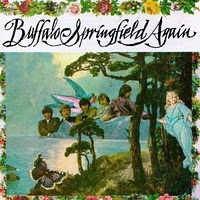 Just a little over 30 minutes long, and it goes in about as many directions. Neil Young’s songs don’t seem to belong on the same record as those of Stills or Furay; actually, they don’t seem to belong in the same universe. Yet the record as a whole doesn’t seem messy at all, but powerful, even focused, by its diversity. I used to love the Young songs — even the psychedelic weirdness of “Broken Arrow” — but these days I find myself attracted to the Stills songs, which are some of his best. “Bluebird” in particular manages to seem both sleek and cryptic at the same time, and the Stills-Young guitar team is a wonder (take that, Yardbirds!). Really, the only clunker is the Dewey Martin-sung “Good Time Boy”, a fairly terrible Otis parody (but at least it adds soul to the band’s armory). Everything else works, even “Mr Soul”, on which Neil borrows a riff from the Rolling Stones. And not for the last time, either. –Brad
Just a little over 30 minutes long, and it goes in about as many directions. Neil Young’s songs don’t seem to belong on the same record as those of Stills or Furay; actually, they don’t seem to belong in the same universe. Yet the record as a whole doesn’t seem messy at all, but powerful, even focused, by its diversity. I used to love the Young songs — even the psychedelic weirdness of “Broken Arrow” — but these days I find myself attracted to the Stills songs, which are some of his best. “Bluebird” in particular manages to seem both sleek and cryptic at the same time, and the Stills-Young guitar team is a wonder (take that, Yardbirds!). Really, the only clunker is the Dewey Martin-sung “Good Time Boy”, a fairly terrible Otis parody (but at least it adds soul to the band’s armory). Everything else works, even “Mr Soul”, on which Neil borrows a riff from the Rolling Stones. And not for the last time, either. –Brad


